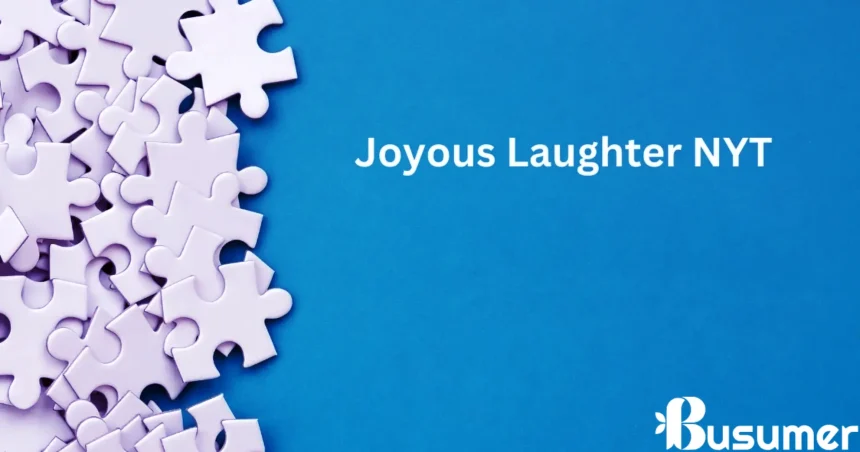In a global often filled with stress and uncertainty, the importance of laughter and joy can not be overstated. The New York Times (NYT) has constantly furnished readers with insights into the human revel in, and its coverage of joyous moments reflects the significance of laughter in our lives. From heartwarming testimonies to features on humor and pleasure, the NYT serves as a reminder of the power of laughter to uplift our spirits and make stronger connections with others.
The Power of Joyous Laughter
Laughter is a prevalent language that transcends cultural and linguistic barriers. It has the energy to bring humans together, lighten the temper, and foster an experience of networking. Joyous laughter can create bonds between friends, households, or even strangers, turning ordinary moments into cherished reminiscences. The New York Times frequently highlights tales that capture the essence of this joyous laughter, reminding us of the easy pleasures in lifestyles.
Whether through articles approximately comedic performances, the joys of parenting, or even the quirky habits of regular humans, the NYT celebrates the moments that make us smile. These stories often function as a source of inspiration, encouraging readers to seek out and recognize the laughter that surrounds them.
Celebrating Humor inside the NYT
The NYT has an extended record of celebrating humor in diverse forms, from witty opinion pieces to lighthearted essays. Columnists and individuals often explore the function of humor in coping with lifestyles’s challenges, losing mild on how laughter can serve as a coping mechanism all through difficult instances. Articles specializing in comedic figures, from stand-up comedians to humorous writers, showcase the various methods wherein laughter can be expressed and preferred.
Additionally, the NYT’s arts section often evaluates comedy suggests, films, and performances that elicit joyous laughter. By selling comedic expertise and highlighting the impact of humor in amusement, the e-book plays a vital role in fostering a culture that values pleasure and laughter.
Laughter as a Remedy
In recent years, intellectual health awareness has emerged as increasingly more prominent, with many experts emphasizing the importance of laughter in promoting well-being. The NYT has featured articles that discuss the therapeutic advantages of laughter, exploring how it may reduce stress, decorate temper, or even enhance physical fitness. Research has shown that laughter triggers the discharge of endorphins, the frame’s natural experience-properly chemicals, leading to an experience of happiness and rest.
By addressing the importance of laughter in intellectual fitness, the NYT encourages readers to prioritize joy in their lives. Whether through humorous interactions with pals, enticing with comedic content material, or genuinely permitting oneself to chuckle freely, the blessings of joyous laughter are profound.
Embracing Joy in Everyday Life
The stories and features determined in the New York Times serve as a reminder to embody pleasure and laughter in our everyday lives. In a quick-paced world full of challenges, taking the time to appreciate moments of happiness could make a great distinction. From sharing a joke with a friend to enjoying a humorous movie, those small acts of pleasure make a contribution to our universal nice-being.
As readers interact with the NYT’s content material that celebrates laughter, they are encouraged to mirror their reviews and locate opportunities for joy in their very own lives. By prioritizing joyous laughter, we can foster a more wonderful outlook and build deeper connections with those round us.
Conclusion: The Importance of Joyous Laughter
In the end, joyous laughter holds a vital area within the cloth of human revel in. The New York Times maintains to play a critical role in highlighting the importance of laughter and pleasure, providing readers insights and memories that uplift and inspire. By celebrating the moments that make us giggle, the NYT reminds us of the significance of finding joy in our normal lives, encouraging us to embrace laughter as an effective treatment for the challenges we face.




